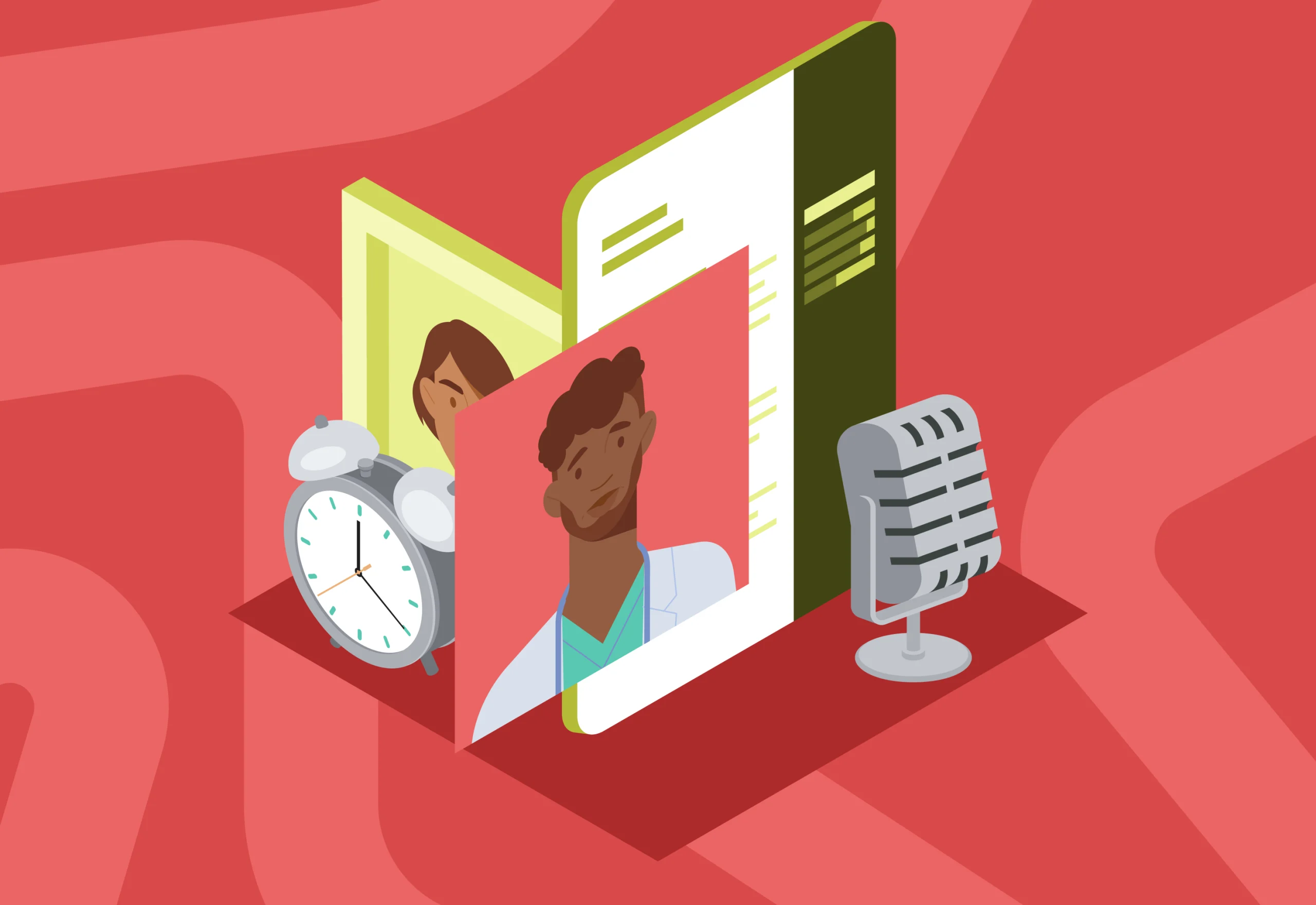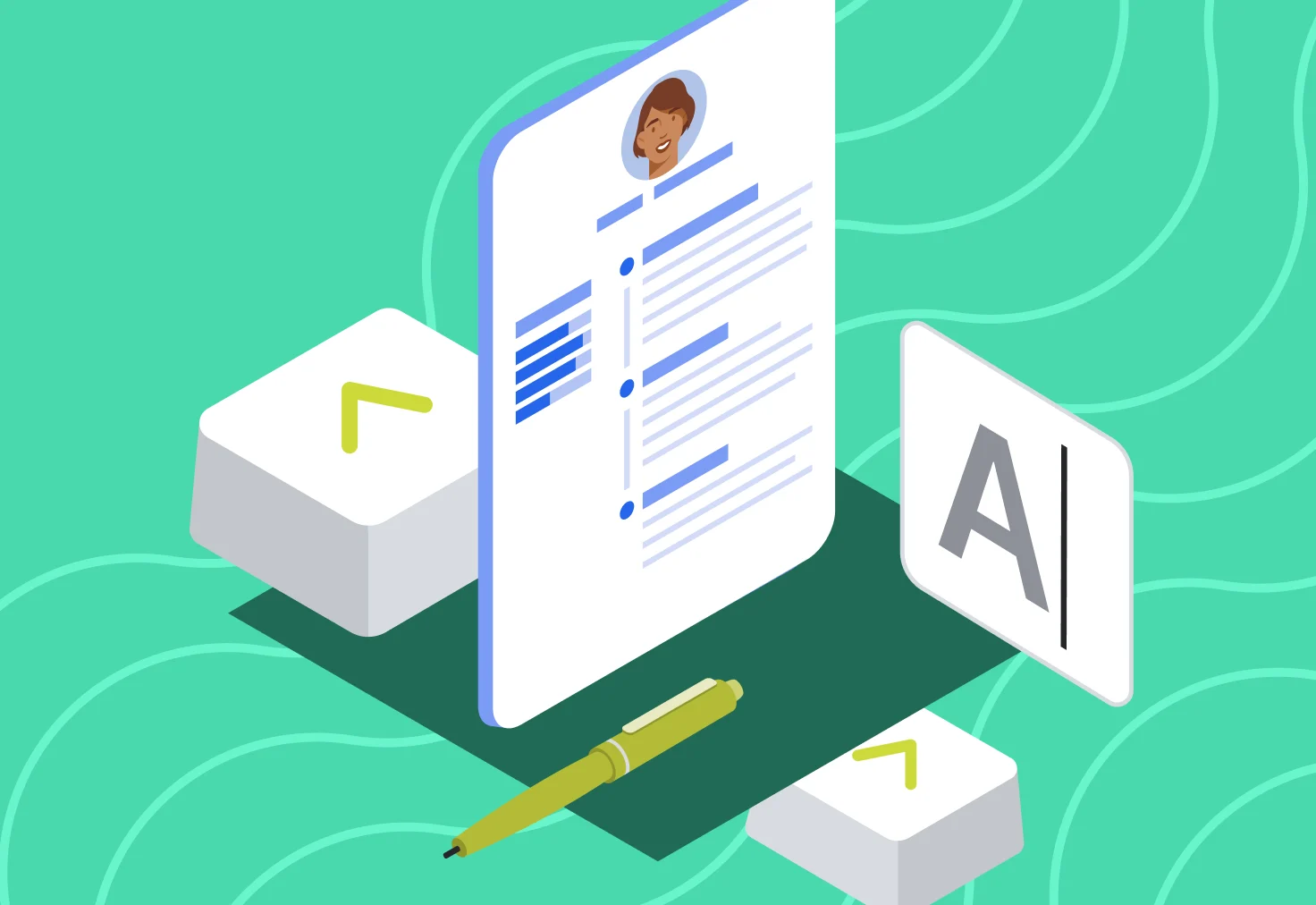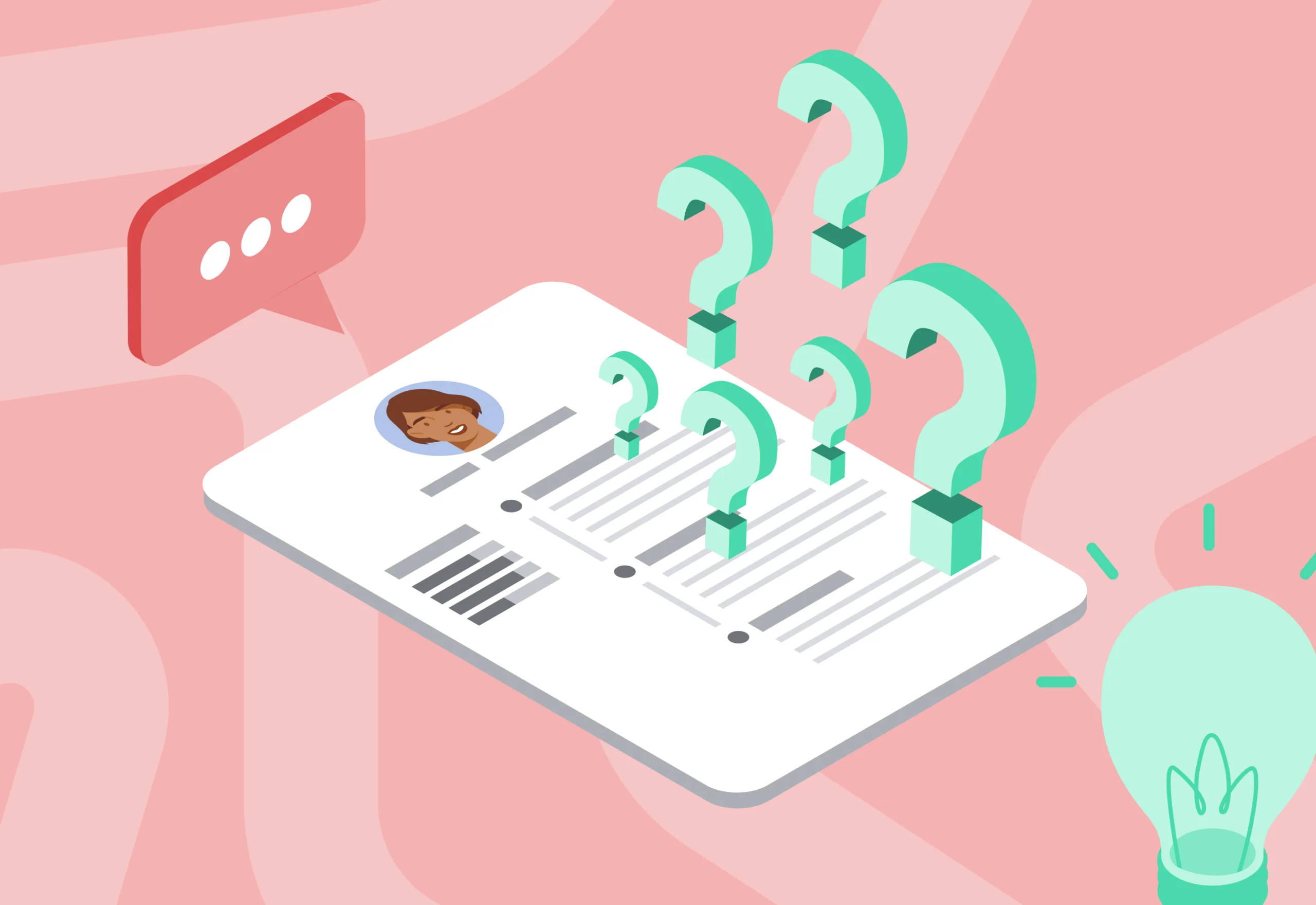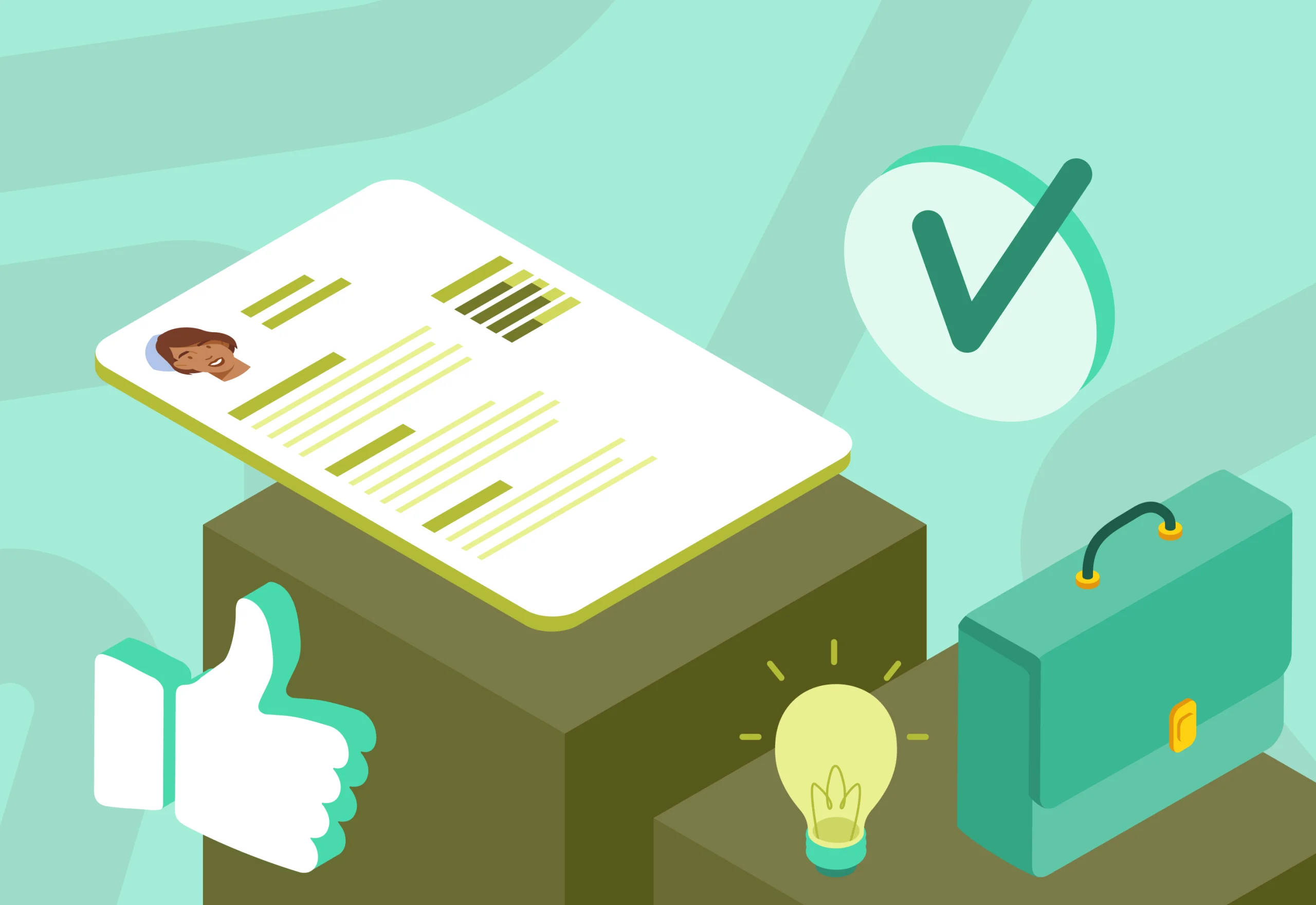As a web developer on a job hunt, you need more than state-of-the-art coding skills. You need a masterpiece of a web developer resume.
However, crafting a standout resume can be just as challenging as debugging a tricky piece of code. If you don’t know what you’re looking for, you could spend hours without making any significant progress.
Fear not, because we created this article to guide you every step of the way. With the right mix of creativity and professionalism, you’ll highlight your skills and achievements in a way that’ll catch the eye of any hiring manager. Just don’t forget to close your parentheses!
Key Takeaways
The chronological resume format generally yields the best results with recruiters and the ATS.
The most important section of your web developer resume is usually the work experience section. You should demonstrate your competence here by highlighting your strongest achievements.
Since web development is a vast field, your skill list should be specifically tailored to the position that you’re applying for.
Don’t neglect the power of optional sections—especially your hobbies and interests—that can make you more noticeable.
What is the Right Format to Use for a Web Developer Resume?

You know the power of clean, well-structured, and well-written code. The same goes for your resume. By using the right format to organize and present your information to recruiters and potential employers, you’ll maximize your chances of success.
Speaking of that, there are three resume formats that have been proven time and again to yield the best results:
The chronological resume format gives recruiters insight into your professional and academic progress. It highlights your most recent accomplishments and lists the rest in descending order. Such methodical information ordering makes this format the most popular. As a bonus, it’s ATS-proof.
The functional resume format puts your skills front and center, making up for a lack of professional history. It’s a perfect format to use when you’re creating a web developer resume with no work experience. The only downside is that your resume might not be ATS-friendly.
The combination (hybrid) resume format is commonly used by professionals who have years of experience under their belts. It makes skills the main section (like the functional format) and supports each with relevant achievements listed in reverse-chronological order (like the chronological format).
Resume Layout

A resume layout represents the style of the document, which is often just as important as its function. It’s not uncommon for recruiters to skim through resumes, spending just a couple of seconds on each. That's why yours needs to be visually clean, information-packed, and—unless you’re a senior with decades of experience—one page long.
Here’s how you can achieve all that:
Use bulleted lists instead of paragraphs of text since they are much shorter and easier to read.
Pick a modern and legible font for your resume and use appropriate font sizes. A sans-serif font like Calibri or Helvetica is generally a safe pick, along with the 10–12 pt size for text and the 14–16 pt size for headings.
Make sure that your resume features margins of at least one inch and enough white space.
What Sections Should a Web Developer Resume Contain?

Mandatory Sections
Regardless of your skills and experience, some sections are a staple in every web developer resume. These mandatory parts are:
Contact information
Resume objective or summary
Work experience
Education
Skills
Optional Sections
After listing these, you can personalize your resume with optional sections, such as:
Awards and certifications
Projects
Languages
Hobbies and interests
By knowing which sections to include, you should be able to create an outline for your web developer resume and start working on it from scratch. Another option is to find a template or tool to help speed up the process.
However, instead of grabbing a random MS Office Word sample of a web developer resume somewhere online and trying to make it work, you can check out our resume builder.
It comes with ready-to-go templates where you can fill in the blanks with your information and adjust various layout settings with intuitive controls. Needless to say, crafting professional resumes has never been this easy!
Web Developer Resume Template
Name and Surname
Phone number: 000-000-0000 | Email: namesurname@gmail.com | Location: City, State
[Adjective] [your job title] with [years of experience, if applicable] in [your area of expertise, if applicable] looking for a [position] job at [company name]. Eager to apply [relevant skills] gained through [work/volunteer/other experience] to help [company name] [mention what you can do for the company].
Work Experience
Most Recent/Current Job Title Company City, State [Start date] — [End date]
For recent jobs, use 5-6 bullet points to list your top achievements and responsibilities
Use action verbs to make your responsibilities and achievements stand out
Add numbers to quantify your achievements
Previous Job Title Company City, State [Start date] — [End date]
For recent jobs, use 5-6 bullet points to list your top achievements and responsibilities
Use action verbs to make your responsibilities and achievements stand out
Add numbers to quantify your achievements
Oldest Job Title Company City, State [Start date] — [End date]
For older jobs, use 2-3 bullet points to list your top achievements and responsibilities
Use action verbs to make your responsibilities and achievements stand out
Add numbers to quantify your achievements
Education
[Degree] in [Major] [University/college name] [Start date] - [Graduation date]
Skills
Soft Skills
Skill #1
Skill #2
Skill #3
Skill #4
Skill #5
Hard Skills
Skill #1
Skill #2
Skill #3
Skill #4
Skill #5
Additional Sections
Add any relevant additional sections (languages, licenses, publications, hobbies, etc.)
Resume templates
Resume templates that are designed to help you win a jobWeb Developer Resume Contact Information

Your web developer resume should start with some basic details about you, including your name, job title, and contact information.
Here’s an example:
Contact Information Example
Edward Mitchell
Web Developer
+ 925 957 2832
edwardmitchell@example.com
Fresno, CA
linkedin.com/in/edwardmitchell77
github.com/edward.mitchell
edwardmitchell.com
You can see in the example that there are several other details that you can include in your contact information section along with your professional email and phone number.
You can add your location (but only your city and state) if you’re applying for a position abroad. It’s also recommended to include your LinkedIn and GitHub profiles. You can also add your personal website and social media accounts, as long as they are relevant to the position that you’re applying for.
Web Developer Resume Objective or Summary

First impressions matter, which is why you want the first thing recruiters read on your web developer resume to be highly impactful. That’s why you should start your resume with a strong objective or summary.
Both of these sections should be 2–4 sentences long, highlighting your key strengths.
If you’re new to the field, you likely won’t have enough work experience to show for it. In that case, you should focus on showcasing your skills and motivation in the form of a resume objective.
However, if you’re an experienced professional, a riveting web developer resume summary that mentions some of your most prominent workplace accomplishments is the way to go.
Web Developer Resume Objective

Let’s check out an example of a sharp web developer resume objective that mentions key skills recruiters might be looking for:
Good Example
“Hard-working recent graduate with a degree in computer science and a solid foundation in programming languages such as HTML, CSS, and JavaScript. Looking for a challenging role at [your company] to utilize expertise in front-end development and problem-solving. Committed to contributing to the success of your company on the road to becoming a full-stack developer.”
Compare that to the following resume objective, which doesn’t really say anything valuable about a candidate:
Bad Example
“Entry-level web developer with a degree but no experience. Eager to work hard and prove myself.”
Web Developer Resume Summary

Here’s how a seasoned web developer can grab recruiters’ attention by highlighting some of their most prominent accomplishments in their resume summary:
Good Example
“Highly skilled senior web developer with more than 10 years of experience developing, designing, and maintaining custom websites in the e-commerce business. Proficient in JavaScript, PHP, and Ruby, as well as Node.js and Ruby on Rails. Adept at utilizing Agile methodologies to manage and deliver large-scale projects under budget with a 95% success rate.”
On the other hand, if you don’t show them any exact results, recruiters won’t be able to tell whether you’re an experienced professional or an entry-level candidate. Here’s how not to write a web developer resume summary:
Bad Example
“Accomplished senior web developer with years of experience looking for a new job. Will bring my competence and strong work ethic to help your team with big projects.”
Web Developer Resume Work Experience

One of the quickest ways to convince recruiters and potential employers that you’re the right person for the job is by demonstrating your previous work endeavors. That’s what the work experience section of your resume should serve for.
General Tips
To start with the essentials, here are the basic components that each work experience section should feature:
Your position
Name and location of the company
Start and end dates of employment
Notable achievements and results
Now that we have a blueprint, here are some tips on how to polish your work experience section and make it outstanding:
You shouldn’t focus on your responsibilities and everyday tasks. Instead, highlight particular accomplishments that demonstrate your high levels of competence.
Instead of writing blocks of text, you should use bulleted lists for brevity and readability.
Don’t try to squeeze every single achievement into your work experience section. 3–5 points per job is a sweet spot.
When mentioning results obtained, you should use numbers and percentages to quantify them and make them tangible.
Avoid overused terms such as “made” or “created.” Instead, go for more memorable action verbs and power words such as “conceptualized” or “formulated.”
Web Developer With No Experience

If you’re writing a web developer resume with no experience—or at least not enough to make an entire section—you can focus on other activities. Use your chance to leverage anything—from projects that you've worked on to internships, volunteer work, freelancing, and more.
Let’s see that in an example:
Web Development Intern
Work Experience
Web Development Intern
Online Solutions
San Diego, CA
July 2022–December 2022
Developed and launched a responsive website for a local non-profit organization, increasing their online donations by 55%.
Collaborated with senior web developers to improve website performance and implement accessibility features, increasing user engagement by 25%.
Utilized HTML, CSS, and JavaScript to develop and maintain website content, resulting in a 21% reduction in update time.
Experienced Web Developer

A work history section of an experienced developer's resume should highlight only their best accomplishments. List those achievements and results obtained that showcase your prowess and demonstrate your seniority.
Here’s a good example:
Senior Web Developer
Work Experience
Senior Web Developer
FrontSoft
New Orleans, LA
March 2017–Current
Developed and maintained 50+ custom websites for various clients, resulting in a 30% overall revenue increase for the company.
Collaborated with cross-functional teams to implement responsive design and utilize modern accessibility practices, boosting mobile traffic by 15%.
Overlooked the onboarding process of 15 junior developers, mentoring and training them to improve their code quality and development time.
Web Developer Resume Education Section

Not every web developer needs to have a formal degree, but listing one is a great way to add credibility to your skills. An education section is all the more important if you’re writing a junior web developer resume and you want to make up for a potential lack of work history. Here are the details to include:
Your degree
The institution issuing it
The years of study
(Optional) Notable achievements
In practice, your education section should look something like this:
Education Section Example
Education
Bachelor of Science in Web Design and Development
Brigham Young University, South Rexburg, ID
2016–2020
Relevant coursework: Front-end Web Development, Database Management, User Experience Design, Mobile Application Development
In general, you should only list your highest degree. If you’re still in college, you can include your unfinished degree on a resume by adding “expected” next to a graduation date or by putting “current” instead.
Web Developer Resume Skills

There’s a bit of finesse when it comes to adding skills to your web developer resume. It’s a vast field that requires many different soft and hard skills, as well as proficiency in various programming languages. However, recruiters are mostly interested in the specific abilities needed for the job.
That’s why your skills need to be tailored to the position that you’re applying for. By researching the job advertisement, you can create a list of the abilities that your potential employers want to see.
Adding that list to the skills section of your web developer resume is only half the job. You also want to put your weight behind your claims and demonstrate your abilities. To do that, you should mention some of your key skills throughout your resume—or, more specifically, in your resume objective or summary and work experience section.
By associating a particular ability with a relevant achievement, you make it more concrete and valuable in the eyes of recruiters and potential employers.
Programming Languages
Programming languages are the bread-and-butter skills for the vast majority of web developers. Here are some that you could add to your web developer resume:
JavaScript
PHP
Ruby
C#
C++
Java
JQuery
Python
Swift
Hard Skills
Hard skills are technical, specialized, and often career- or position-specific. You should consider adding some of these to your resume:
Wireframes
Vector graphics
Algorithms
Debugging
Git
WordPress
Photoshop
Illustrator
Soft Skills
Unlike hard skills, soft skills are transferable between professions, as they represent a broad collection of interpersonal abilities and characteristics. Some highly desired soft skills that you can add to your resume are:
Critical thinking
Problem-solving
Collaboration
Communication
Organization
Work ethic
Leadership
Creativity
Web DeveloperResume Optional Sections

While mandatory sections represent the foundation of your resume, optional sections allow you to spruce it up and make it stand out.
Awards & Certifications
Awards and certifications are perfect supplements to your work experience and education sections.
By listing notable awards, you further add credibility to your competence and make some of your achievements truly stand out.
On the other hand, certifications add to your education since they can show that you have specific knowledge on particular topics. Certifications are even more important if you don’t have a formal degree.
Projects
You can add personal projects to your web development resume to show that you’re truly passionate about your vocation. Moreover, mentioning these can be a great way to impress recruiters and hiring managers, as you’re actually showing them concrete examples of your work (e.g., websites or apps made from scratch).
Languages
Considering the job of a web developer revolves around working on the internet, chances are you'll end up working with coworkers and clients from other countries. In that case, proficiency in foreign languages can help you communicate better, foster stronger relationships, and be more productive.
When adding languages to your resume, you should start with the one you know best and include the rest in descending order. The proficiency levels are:
Native/bilingual
Full professional proficiency
Professional working proficiency
Limited working proficiency
Elementary proficiency
Hobbies & Interests
A surprisingly powerful way to grab the attention of recruiters and potential employers is to mention your hobbies and interests. That way, you can show them that there’s an actual person behind a resume who is a driven, passionate, and exciting individual.
List something you’re truly enthusiastic about, and don’t be surprised if it comes up during your interview.
Should You Submit a Cover Letter With Your Web Developer Resume?

Cover letter templates
Create a cover letter by filling in a free template and sharing it for freeAn easy way to show strong interest in the position and portray yourself as a hard-working individual is to submit a cover letter with your web developer resume. Use a few short paragraphs to describe your skills and accomplishments in more detail, connect with recruiters on a more personal level, and ask them to get in touch with you for more discussion.
Expert Tips for Creating a Web Developer Resume
Let’s finish this comprehensive guide with a few secret tips to help you get ahead of the competition:
Since your resume objective/summary acts as an introduction to the rest of the document, it’s often best to write it last.
A PDF file ensures the layout of your resume doesn’t change on different devices. Still, you should check out the job ad to make sure that they accept PDFs.
For the best chances of success, you should tailor your resume to the specific position that you’re applying for. That means listing the most relevant skills and accomplishments.
Even if you have more information to add to your resume, you can get away with a one-page document in most cases. After all, you can always use a cover letter to include additional achievements and abilities.
Closing Thoughts
The process of resume-building probably doesn’t look like a daunting task anymore, does it?
Remember to showcase your skills and experience, but don’t be afraid to inject a bit of personality into your document. After all, being a web developer isn’t just about coding but also about creativity and problem-solving. So go forth, and may your resume be bug-free and your career be full of exciting opportunities!


